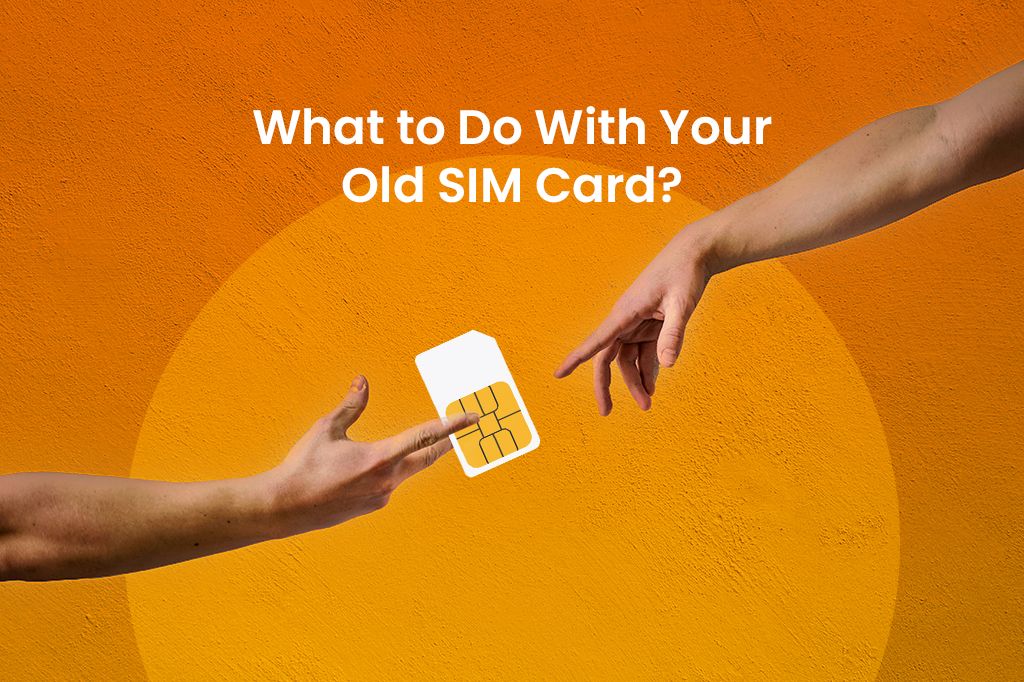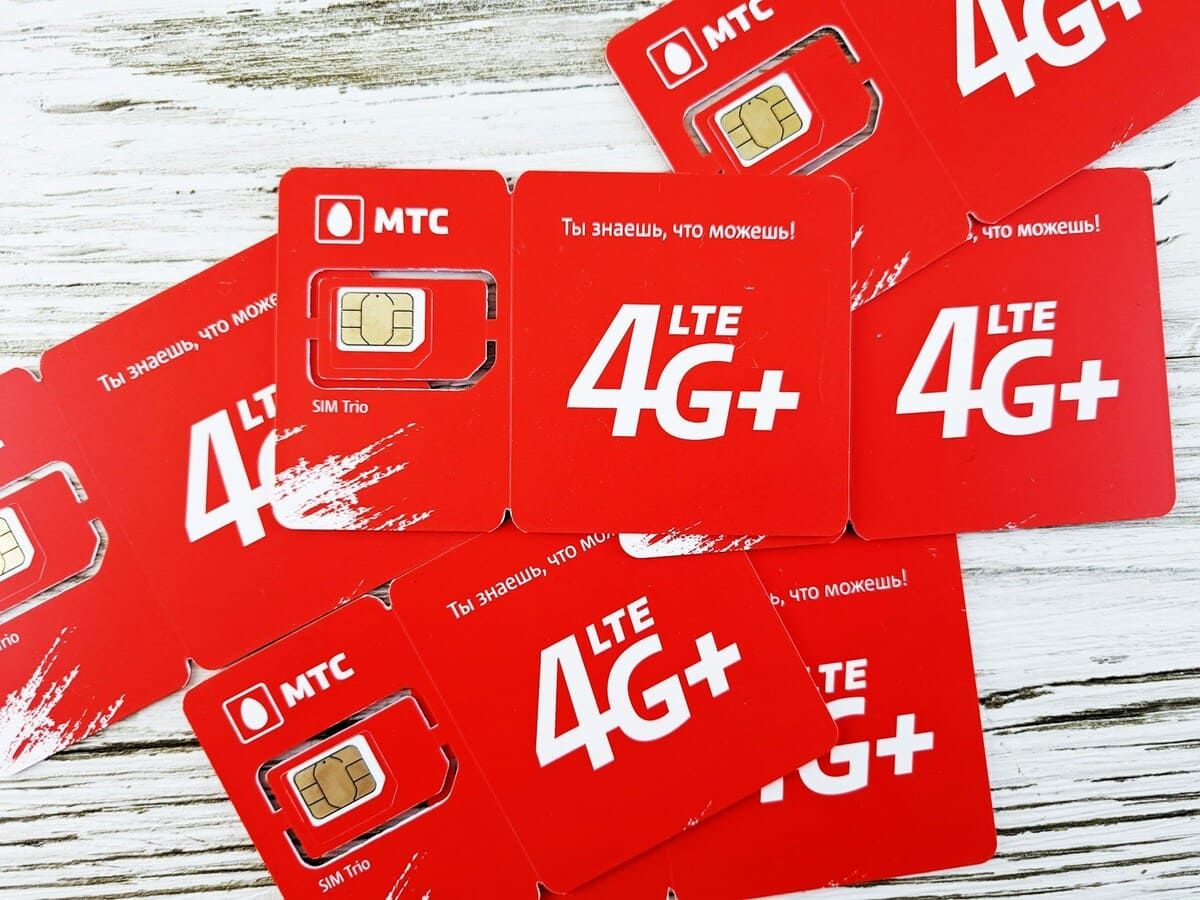Do you have an old SIM card collecting dust in your drawer? Don’t toss it just yet. That tiny chip might be holding more secrets than you might think. From storing forgotten messages to being a target for hackers (yes, really), your old SIM is anything but harmless. Here are some things you need to know before you ditch that plastic card.

The SIM Card: Tiny Chip, Big Secrets
When you think of your SIM card, you probably imagine it as just a small, forgettable piece of plastic that holds your phone number. That is not exactly true. The SIM card (Subscriber Identity Module) is actually a powerhouse that stores important data and helps manage everything from encryption to network connections. And even though it’s no bigger than a fingernail, it holds key information in terms of data and functionality. Here are some of the key pieces of data stored on your SIM:
-
IMSI (International Mobile Subscriber Identity): This is your SIM’s personal ID number. It tells the network who you are and lets them authenticate you. It’s like your SIM’s “passport” to the mobile world.
-
Ki (Authentication Key): This is the SIM’s encryption key. Whenever your phone talks to the network, it uses this key to encrypt your calls, texts, and data. So yeah, it’s kind of a big deal for keeping your stuff private.
-
ICCID (Integrated Circuit Card Identifier): This is your SIM’s serial number. It’s unique to your SIM card and helps the network track and manage your SIM.
-
MCC & MNC (Mobile Country Code & Mobile Network Code): These codes tell the network where you are and which carrier you’re using. They help route your calls and texts correctly, and they make roaming possible when you’re overseas.
-
SMSC (Short Message Service Center) Address: This is the address your phone uses to send and receive text messages. Without it, your SMS service would basically be offline.
But wait, there’s more! Your SIM can also store contacts and SMS messages (even the ones you thought you deleted), making it possible to switch devices without losing your important info.
So, that old SIM card you’ve got lying around is not just a piece of plastic. It could still contain some valuable info like your network credentials, old texts, and even old contacts that you might’ve thought were gone for good. And if you’re into mobile forensics or just curious about what’s lurking in your device’s past, that old SIM card might be a goldmine of data.
You, the SIM, and the Global Spy Network
SIM cards do more than just connect you to your mobile network, they’re also the digital bridge to your life. For instance, your phone number is tied to a multitude of personal accounts such as email, social media, online banking, and even cryptocurrency wallets. And that’s what makes your SIM a prime target for hackers.
If someone gains control of your SIM, they’ve essentially got the keys to bypass security measures like two-factor authentication (2FA) that rely on SMS codes. One of the most dangerous methods hackers use to target SIM cards is SIM swapping, where hackers convince your mobile provider to transfer your phone number to a new SIM card they control. That way, they can intercept your calls, texts, and SMS-based verification codes and gain access to your bank account, email, social media, and any other services tied to your phone number.
What’s more, SIM cards don’t need to be active to be dangerous. An old SIM card that hasn’t been properly deactivated could still pose a risk, especially if it’s still tied to an active phone number. Even if inactive, it might still contain residual data like contacts or messages, which could be misused if found by the wrong person.
Unfortunately, many people overlook these dormant SIMs, leaving a gap that hackers can exploit. Additionally, some older SIM cards are vulnerable due to outdated encryption systems, such as the DES algorithm, which skilled attackers can crack. This weakness allows hackers to extract secret keys stored on the card, potentially enabling them to eavesdrop on communications or steal your identity.
For these reasons, it’s crucial to dispose of old SIM cards securely. Simply tossing them in the trash leaves you vulnerable to these threats. Even if a card is no longer in use, its data can still be exploited if it falls into the wrong hands.
The International SIM Scandal
When we think of SIM cards, few people know that they are at the center of an international black market, one that fuels fraud, scam syndicates, and organized cybercrime across borders. This isn’t petty resale. It’s an ecosystem.
In countries like Malaysia, the black market is fueled by wholesale access. Large-scale resellers can purchase SIM cards directly from telecom providers at bulk discounts and then flip them at a premium. With lax identity verification, fraudsters can activate dozens, even hundreds, of SIMs per week. It’s fast, cheap, and scalable. It’s the perfect conditions for mass exploitation.
Singapore, by contrast, has tighter telecom regulations. But that only raises the value of its SIM cards on the black market. A Singaporean SIM, legitimately registered and harder to come by, can fetch up to USD 138 per card. For scam operations, that’s a worthwhile investment: SIMs from a tightly regulated system lend credibility to fake social media accounts, phishing operations, and money laundering fronts.
In parts of Africa and Southeast Asia, black market SIMs support a darker economy: scam centers run by organized groups, often involving victims of human trafficking. These individuals are coerced into fraud operations, cycling through SIM cards constantly to stay ahead of law enforcement. With each SIM lasting just a few weeks or months before being discarded, it becomes nearly impossible to track down a digital paper trail.
As revealed here, discarded or improperly handled SIM cards can end up in the wrong hands. In countries with weak telecom regulations, black market networks thrive on bulk SIM activation, fueling scams, cybercrime, and even human trafficking operations. Old SIMs, if active or containing residual data, become prime targets.
So, what can you do with your old SIM card to protect yourself and help shut down this global misuse? Let’s take a look.
What To Do With Your Old SIM Card?
Old SIM cards tend to pile up over time, whether it’s from upgrading your phone, switching networks, or just holding onto old phones for sentimental reasons. But before tossing them in the trash, there are safer and more eco-friendly methods of disposal, as well as creative ways to repurpose them. Here are some tips and ideas on what to do with your old SIM cards:
Safe Destruction: Protecting Your Data
Your old SIM card holds personal information like phone numbers, contacts, and sometimes even text messages. If you just toss it in the trash, that data could end up in the wrong hands. Here’s how you can safely destroy it:
-
Cut it up: Use scissors or wire cutters to slice the card into multiple pieces. The most crucial part to focus on is the gold or copper chip, where most of the data is stored. By breaking this into fragments, you make data recovery nearly impossible.
-
Crush it: If you don’t have scissors, using a hammer to crush the SIM card is another effective method. Ensure you break the chip into small shards to make data extraction difficult. Lay the card on a hard surface, then hit it with a hammer until you hear the chip crack.
-
Avoid microwaving: The idea of microwaving your SIM card might sound like a high-tech way to destroy it, but it’s actually quite dangerous. The metal contacts on the SIM can cause sparks, potentially damaging your microwave and posing a risk of fire. Plus, microwaving doesn’t guarantee total destruction of the chip’s data and releases harmful fumes from the plastic.

Photo by Andrey Matveev on Unsplash
Eco-friendly Disposal
Instead of sending your SIM card to the landfill, take advantage of specialized electronic recyclers. Many areas have e-waste centers that accept small electronics like SIM cards, ensuring they’re dismantled safely and that valuable materials are recycled responsibly. Telecom companies also sometimes offer SIM card recycling programs.
-
In North America, you can use services like Call2Recycle or find local e-waste facilities through Earth911. Best Buy also has an in-store recycling program for old electronics.
-
In Europe, the WEEE Directive ensures proper e-waste disposal, and Recycle Now helps UK residents find local drop-off centers.
-
For Asia, Japan’s Eco-Technology Recycling and South Korea’s Korean Resource Recycling Association (KRRA) offer well-established e-waste programs.
-In Africa and Latin America, organizations like E-Waste Africa and India’s Greendust provide e-waste solutions.
Rather than throwing away your old SIM card, turn it into a creative project, a science, or a digital forensics experiment. Here are some unexpected ways to reuse old SIM cards:
Crafty Reuse
Transform your old SIM card into stylish jewelry or tech-themed décor. The small, flat design of the card makes it ideal for crafting necklaces, earrings, or keychains. You can even embed them in resin for a sleek, futuristic look.
Alternatively, try creating circuit art by arranging multiple SIM cards to form patterns or intricate designs. This method combines recycling with art, making a statement piece for your tech-themed space.
Science Experiments
Old SIM cards can be perfect for educational projects. Use them to test electrical conductivity, comparing the SIM card’s chip to other materials. It’s a great hands-on way to teach kids (or even adults) about electronics.
Another fun experiment can be testing data retention. How long does data remain intact on the SIM card after power loss or physical damage? These experiments are a cool way to dive into the science of electronics.
Digital Forensics Practice
If you’re interested in the field of digital forensics or security, old SIM cards offer a great opportunity to practice. By learning how to extract data from discarded SIM cards, you can build your skills in mobile forensics without risking real data. Try recovering contacts, messages, and metadata from a SIM as a digital detective. It’s an excellent hands-on way to get familiar with the tools and techniques used in forensic data extraction.
Urban Mythbusters
Have you ever wondered if a SIM card without service can still be tracked by a mobile network? Or whether a damaged SIM card can still be read? Put these tech myths to the test by experimenting with your old SIMs. Whether it’s investigating whether a SIM emits a signal or testing its ability to hold data after physical damage, these experiments can reveal surprising truths and debunk myths.
The SIM Reuse Marketplace
Most people view old SIM cards as nothing more than outdated tech clutter, but surprisingly, there’s a niche market where certain vintage SIMs can be valued for their historical, cultural, or collectible significance.
Some early SIM cards have become collectible over time, especially those from defunct carriers or the early days of mobile networks. Just like early mobile phones, SIM cards hold an important part of digital communication history and are highly appealing to some collectors.
A well-known example is Virgin Mobile’s UK launch cards from the early 2000s, marking the arrival of one of the first MVNOs in the UK market. Collectors often value these cards not for their functionality, but for their role in telecom history, especially if they feature unique designs or packaging.
Most old SIM cards are destined for the recycling bin, and rightfully so, especially to keep your personal data safe. But a surprising few have found a second life in a niche collectors’ market. Sites like eBay, telecom memorabilia forums, and even specialty auctions have become hotspots for trading these tiny tech relics. While most won’t fetch much, the right SIM in the right condition could be worth good money.
Should You Keep Your Old SIM?
Sometimes it makes sense to keep an old SIM card. If it’s linked to important information like bank accounts, work messages, or services that use your phone number for login or security, it could help you access past information or prove something later.
Old SIM cards can also be useful for tech professionals who need them for testing or working with older mobile networks. In some countries, SIM cards are connected to your national ID, so they might be useful as proof of identity in certain situations.
As we explained before, though, there are some risks. If the SIM is still active or could be reactivated, someone else might misuse it. If you don’t need it anymore, it’s safer to cancel it with your provider or destroy it.
In short, keep the SIM only if it’s clearly useful and store it safely.
Enter the eSIM Era: No More Old SIM Cards
With the rise of eSIM technology, there’s no longer a physical card to toss or destroy. Everything is digital and easier to manage.
Thanks to providers like Yoho Mobile, which now offer free eSIM cards, you can set up your mobile service instantly without waiting for a physical card to arrive. This makes things easier, faster, and more secure. The future of mobile connections is digital and simple.
FAQs
Can a deactivated SIM card still get messages?
No. Once your SIM card is deactivated by your mobile carrier, it can’t send or receive calls, texts, or data. Messages sent to that number won’t reach the SIM. Deactivated SIM cards cannot be reactivated in the traditional sense, and any messages sent during deactivation are typically lost and unrecoverable.
Can an old SIM card prove who I am in a dispute?
Sometimes. If the SIM card was registered under your name and linked to official records, it might help prove your identity. But usually, it’s not enough by itself—you’ll need other documents too.
Are SIM cards radioactive?
No. SIM cards are made from plastic and tiny computer chips, but they do not contain any radioactive materials. They are safe and do not emit radiation.
Do some SIM cards have built-in crypto keys?
Yes. Certain SIM cards, especially those used by the military or governments, store cryptographic keys to secure communication. Some newer SIMs can even hold cryptocurrency keys for secure digital transactions.
Why do hackers buy SIM cards in bulk on eBay?
Hackers buy many SIM cards to perform “SIM swapping” attacks. This lets them take control of phone numbers to steal accounts and personal info by intercepting security codes sent via text.
How are SIM cards used in protests under authoritarian governments?
Activists use multiple SIM cards to get around internet blocks and censorship. But governments track SIM registrations to identify and monitor people. Despite risks, SIM cards help protesters communicate when other channels are restricted.
Can you clone an old SIM card just for fun?
Technically, yes, with special tools, but it’s usually illegal and against carrier rules. Cloning SIMs without permission can lead to serious legal trouble.

